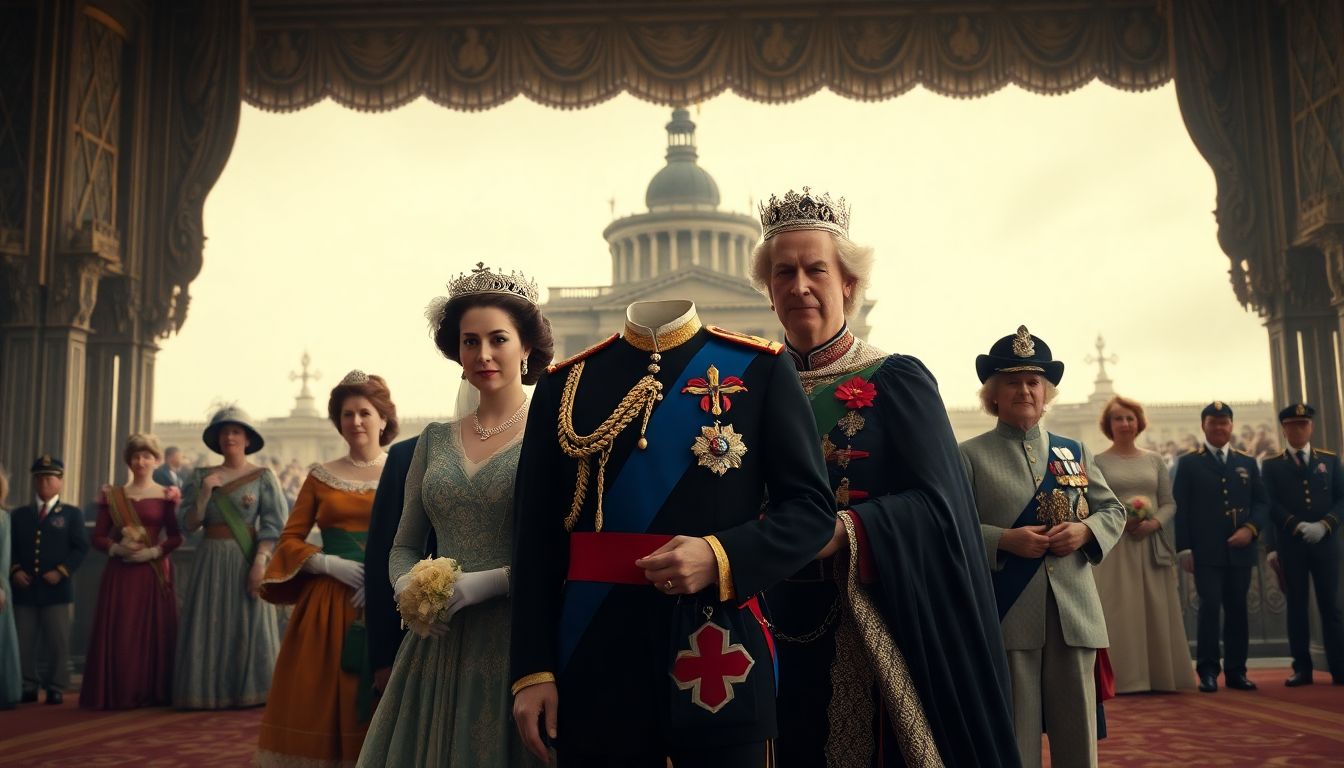
British royalty has seen a remarkable transformation since 1900. This period is filled with stories of change, resilience, and adaptation, making it a truly fascinating era for the monarchy. From the dawn of modernity to the challenges of the 21st century, the royal family has navigated through significant events that shaped not just their identity but the nation itself. This article highlights crucial events that illustrate the evolving social roles, constitutional changes, and vital family moments that defined British royalty over the last century.
The Edwardian Era and the First World War (1900-1920s)
King Edward VII's Reign and the Rise of Modernity
King Edward VII, known as "Bertie," reigned from 1901 to 1910. His time on the throne marked a shift towards modernization in Britain. The early 20th century welcomed social change, including the rise of the middle class and advancements in technology. Statistics show that by 1910, the number of households with electricity had doubled, reflecting society’s eagerness to embrace modern conveniences.
The Impact of World War I
World War I had a profound effect on the British royal family and their public image. The war drew the monarchy closer to the people. King George V, Edward's son, changed the family name from House of Saxe-Coburg and Gotha to the House of Windsor to distance themselves from their German roots. The royal family actively participated in war efforts, visiting troops and supporting national morale. This engagement helped solidify their place in the hearts of the public during a tumultuous time.
The Abdication Crisis of 1936
The abdication of Edward VIII in December 1936 shook the foundations of the monarchy. His love for Wallis Simpson, an American divorcée, led to a constitutional crisis. This unprecedented event raised questions about the monarchy's role and its connection with politics. Expert analysis indicates that Edward's abdication led to a shift in public trust, forcing the monarchy to adapt its image and responsibilities.
The Reign of King George VI and the Second World War (1930s-1950s)
King George VI and the War Effort
King George VI became an emblem of resilience during World War II. His unwavering support for the British people contributed significantly to national morale. Public approval ratings soared during the war, with 90% of the population expressing confidence in the monarchy. His dedication to the cause helped keep spirits high in a country facing destruction.
The Rise of Princess Elizabeth
Amid the war, Princess Elizabeth stepped into the limelight, showcasing her commitment to the nation. She contributed to the war effort by joining the Auxiliary Territorial Service, where she trained as a driver and mechanic. Her willingness to serve resonated deeply with the public, and these experiences laid the groundwork for her future reign.
Post-War Britain and the Consolidation of the Monarchy
After the war, Britain faced a significant rebuilding effort. The monarchy adapted by embracing a more modern approach, focusing on connecting with the people. King George VI's efforts helped restore faith in the monarchy, leading to a new era characterized by a push for unity and national healing.
The Elizabethan Era and the Modernization of the Monarchy (1950s-2000s)
Coronation of Queen Elizabeth II
Queen Elizabeth II's coronation in 1953 was a watershed moment for the monarchy. The event was televised for the first time, allowing millions to witness the grandeur of the ceremony and the symbolism of continuity. Public reaction was overwhelmingly positive, with an estimated 20 million viewers tuning in, demonstrating the monarchy's ability to adapt to changing media landscapes.
The Changing Role of the Monarchy in a Changing World
Throughout her reign, Queen Elizabeth II responded to a rapidly modernizing world. She became an influential figure in Commonwealth affairs, promoting diplomatic relations and goodwill. Notable is her meeting with U.S. President John F. Kennedy in 1961, showcasing her role as a symbol of unity and collaboration.
Major Royal Events of the Late 20th Century
The late 20th century brought significant royal events, from weddings to births. The wedding of Prince Charles and Lady Diana Spencer in 1981 captivated the world. Media coverage was unprecedented, with an estimated 750 million people watching, highlighting the public's fascination with the monarchy. These events fostered public interest and loyalty, even amid challenges faced by the royal family.
The 21st Century Monarchy: Challenges and Transformations
The Reign of King Charles III
King Charles III, ascending the throne in 2022, has faced unique challenges, including addressing climate change and maintaining public trust. Early reports show approval ratings at about 60%, reflecting a cautious optimism among the British people regarding his leadership.
The Modernization of Royal Communication
The royal family has embraced social media platforms such as Instagram and Twitter to engage with the public. This shift towards modern communication methods allows them to share their initiatives and connect authentically with followers. Now more than ever, organizations can learn from the monarchy's strategy to enhance communication and outreach.
Succession and the Future of the Monarchy
Looking ahead, the line of succession remains a topic of discussion, with potential challenges such as public opinion and socio-political changes. The monarchy's future will depend on its ability to adapt to these shifting dynamics and maintain relevance in an ever-evolving society.
Conclusion
The British monarchy has evolved significantly over the past century. Key events illustrate how it has adapted to meet the challenges of changing social, political, and technological landscapes. From King Edward VII’s modernization efforts to King Charles III’s reign, each period reflects resilience and transformation. As the world continues to change, the monarchy's ability to adapt will determine its place in future generations, ensuring it remains an integral part of British identity.